Zhichao Xu
ConvMix: A Mixed-Criteria Data Augmentation Framework for Conversational Dense Retrieval
Aug 06, 2025Abstract:Conversational search aims to satisfy users' complex information needs via multiple-turn interactions. The key challenge lies in revealing real users' search intent from the context-dependent queries. Previous studies achieve conversational search by fine-tuning a conversational dense retriever with relevance judgments between pairs of context-dependent queries and documents. However, this training paradigm encounters data scarcity issues. To this end, we propose ConvMix, a mixed-criteria framework to augment conversational dense retrieval, which covers more aspects than existing data augmentation frameworks. We design a two-sided relevance judgment augmentation schema in a scalable manner via the aid of large language models. Besides, we integrate the framework with quality control mechanisms to obtain semantically diverse samples and near-distribution supervisions to combine various annotated data. Experimental results on five widely used benchmarks show that the conversational dense retriever trained by our ConvMix framework outperforms previous baseline methods, which demonstrates our superior effectiveness.
MiniMax-M1: Scaling Test-Time Compute Efficiently with Lightning Attention
Jun 16, 2025Abstract:We introduce MiniMax-M1, the world's first open-weight, large-scale hybrid-attention reasoning model. MiniMax-M1 is powered by a hybrid Mixture-of-Experts (MoE) architecture combined with a lightning attention mechanism. The model is developed based on our previous MiniMax-Text-01 model, which contains a total of 456 billion parameters with 45.9 billion parameters activated per token. The M1 model natively supports a context length of 1 million tokens, 8x the context size of DeepSeek R1. Furthermore, the lightning attention mechanism in MiniMax-M1 enables efficient scaling of test-time compute. These properties make M1 particularly suitable for complex tasks that require processing long inputs and thinking extensively. MiniMax-M1 is trained using large-scale reinforcement learning (RL) on diverse problems including sandbox-based, real-world software engineering environments. In addition to M1's inherent efficiency advantage for RL training, we propose CISPO, a novel RL algorithm to further enhance RL efficiency. CISPO clips importance sampling weights rather than token updates, outperforming other competitive RL variants. Combining hybrid-attention and CISPO enables MiniMax-M1's full RL training on 512 H800 GPUs to complete in only three weeks, with a rental cost of just $534,700. We release two versions of MiniMax-M1 models with 40K and 80K thinking budgets respectively, where the 40K model represents an intermediate phase of the 80K training. Experiments on standard benchmarks show that our models are comparable or superior to strong open-weight models such as the original DeepSeek-R1 and Qwen3-235B, with particular strengths in complex software engineering, tool utilization, and long-context tasks. We publicly release MiniMax-M1 at https://github.com/MiniMax-AI/MiniMax-M1.
Found in Translation: Measuring Multilingual LLM Consistency as Simple as Translate then Evaluate
May 28, 2025Abstract:Large language models (LLMs) provide detailed and impressive responses to queries in English. However, are they really consistent at responding to the same query in other languages? The popular way of evaluating for multilingual performance of LLMs requires expensive-to-collect annotated datasets. Further, evaluating for tasks like open-ended generation, where multiple correct answers may exist, is nontrivial. Instead, we propose to evaluate the predictability of model response across different languages. In this work, we propose a framework to evaluate LLM's cross-lingual consistency based on a simple Translate then Evaluate strategy. We instantiate this evaluation framework along two dimensions of consistency: information and empathy. Our results reveal pronounced inconsistencies in popular LLM responses across thirty languages, with severe performance deficits in certain language families and scripts, underscoring critical weaknesses in their multilingual capabilities. These findings necessitate cross-lingual evaluations that are consistent along multiple dimensions. We invite practitioners to use our framework for future multilingual LLM benchmarking.
SLOT: Structuring the Output of Large Language Models
May 06, 2025Abstract:Structured outputs are essential for large language models (LLMs) in critical applications like agents and information extraction. Despite their capabilities, LLMs often generate outputs that deviate from predefined schemas, significantly hampering reliable application development. We present SLOT (Structured LLM Output Transformer), a model-agnostic approach that transforms unstructured LLM outputs into precise structured formats. While existing solutions predominantly rely on constrained decoding techniques or are tightly coupled with specific models, SLOT employs a fine-tuned lightweight language model as a post-processing layer, achieving flexibility across various LLMs and schema specifications. We introduce a systematic pipeline for data curation and synthesis alongside a formal evaluation methodology that quantifies both schema accuracy and content fidelity. Our results demonstrate that fine-tuned Mistral-7B model with constrained decoding achieves near perfect schema accuracy (99.5%) and content similarity (94.0%), outperforming Claude-3.5-Sonnet by substantial margins (+25 and +20 percentage points, respectively). Notably, even compact models like Llama-3.2-1B can match or exceed the structured output capabilities of much larger proprietary models when equipped with SLOT, enabling reliable structured generation in resource-constrained environments.
CSPLADE: Learned Sparse Retrieval with Causal Language Models
Apr 15, 2025Abstract:In recent years, dense retrieval has been the focus of information retrieval (IR) research. While effective, dense retrieval produces uninterpretable dense vectors, and suffers from the drawback of large index size. Learned sparse retrieval (LSR) has emerged as promising alternative, achieving competitive retrieval performance while also being able to leverage the classical inverted index data structure for efficient retrieval. However, limited works have explored scaling LSR beyond BERT scale. In this work, we identify two challenges in training large language models (LLM) for LSR: (1) training instability during the early stage of contrastive training; (2) suboptimal performance due to pre-trained LLM's unidirectional attention. To address these challenges, we propose two corresponding techniques: (1) a lightweight adaptation training phase to eliminate training instability; (2) two model variants to enable bidirectional information. With these techniques, we are able to train LSR models with 8B scale LLM, and achieve competitive retrieval performance with reduced index size. Furthermore, we are among the first to analyze the performance-efficiency tradeoff of LLM-based LSR model through the lens of model quantization. Our findings provide insights into adapting LLMs for efficient retrieval modeling.
A Systematic Survey of Automatic Prompt Optimization Techniques
Feb 24, 2025Abstract:Since the advent of large language models (LLMs), prompt engineering has been a crucial step for eliciting desired responses for various Natural Language Processing (NLP) tasks. However, prompt engineering remains an impediment for end users due to rapid advances in models, tasks, and associated best practices. To mitigate this, Automatic Prompt Optimization (APO) techniques have recently emerged that use various automated techniques to help improve the performance of LLMs on various tasks. In this paper, we present a comprehensive survey summarizing the current progress and remaining challenges in this field. We provide a formal definition of APO, a 5-part unifying framework, and then proceed to rigorously categorize all relevant works based on their salient features therein. We hope to spur further research guided by our framework.
A Survey of Model Architectures in Information Retrieval
Feb 20, 2025Abstract:This survey examines the evolution of model architectures in information retrieval (IR), focusing on two key aspects: backbone models for feature extraction and end-to-end system architectures for relevance estimation. The review intentionally separates architectural considerations from training methodologies to provide a focused analysis of structural innovations in IR systems.We trace the development from traditional term-based methods to modern neural approaches, particularly highlighting the impact of transformer-based models and subsequent large language models (LLMs). We conclude by discussing emerging challenges and future directions, including architectural optimizations for performance and scalability, handling of multimodal, multilingual data, and adaptation to novel application domains beyond traditional search paradigms.
MAIN-RAG: Multi-Agent Filtering Retrieval-Augmented Generation
Dec 31, 2024



Abstract:Large Language Models (LLMs) are becoming essential tools for various natural language processing tasks but often suffer from generating outdated or incorrect information. Retrieval-Augmented Generation (RAG) addresses this issue by incorporating external, real-time information retrieval to ground LLM responses. However, the existing RAG systems frequently struggle with the quality of retrieval documents, as irrelevant or noisy documents degrade performance, increase computational overhead, and undermine response reliability. To tackle this problem, we propose Multi-Agent Filtering Retrieval-Augmented Generation (MAIN-RAG), a training-free RAG framework that leverages multiple LLM agents to collaboratively filter and score retrieved documents. Specifically, MAIN-RAG introduces an adaptive filtering mechanism that dynamically adjusts the relevance filtering threshold based on score distributions, effectively minimizing noise while maintaining high recall of relevant documents. The proposed approach leverages inter-agent consensus to ensure robust document selection without requiring additional training data or fine-tuning. Experimental results across four QA benchmarks demonstrate that MAIN-RAG consistently outperforms traditional RAG approaches, achieving a 2-11% improvement in answer accuracy while reducing the number of irrelevant retrieved documents. Quantitative analysis further reveals that our approach achieves superior response consistency and answer accuracy over baseline methods, offering a competitive and practical alternative to training-based solutions.
State Space Models are Strong Text Rerankers
Dec 18, 2024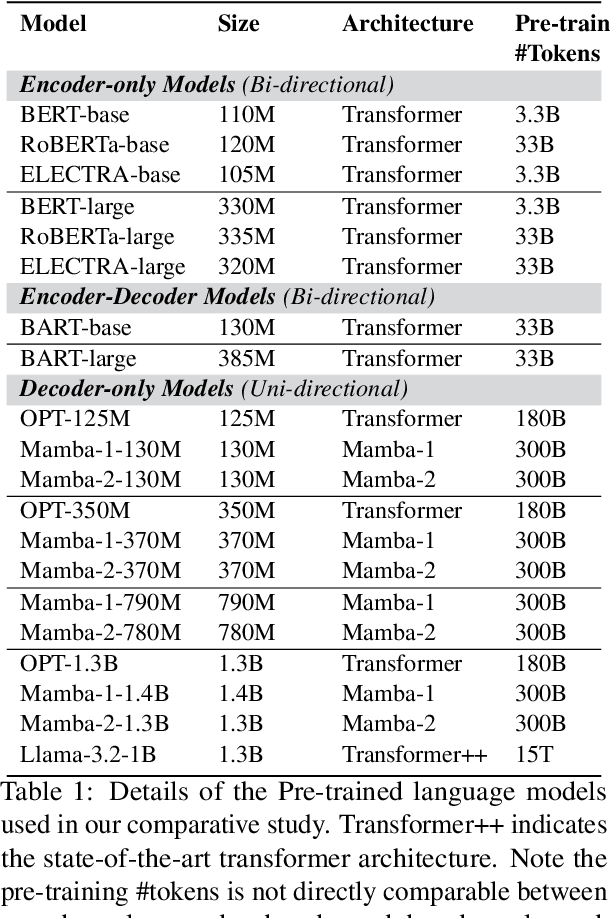
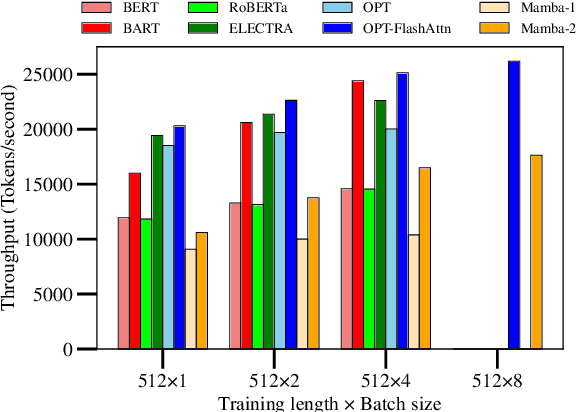

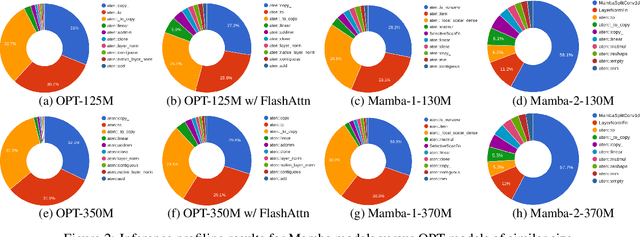
Abstract:Transformers dominate NLP and IR; but their inference inefficiencies and challenges in extrapolating to longer contexts have sparked interest in alternative model architectures. Among these, state space models (SSMs) like Mamba offer promising advantages, particularly $O(1)$ time complexity in inference. Despite their potential, SSMs' effectiveness at text reranking -- a task requiring fine-grained query-document interaction and long-context understanding -- remains underexplored. This study benchmarks SSM-based architectures (specifically, Mamba-1 and Mamba-2) against transformer-based models across various scales, architectures, and pre-training objectives, focusing on performance and efficiency in text reranking tasks. We find that (1) Mamba architectures achieve competitive text ranking performance, comparable to transformer-based models of similar size; (2) they are less efficient in training and inference compared to transformers with flash attention; and (3) Mamba-2 outperforms Mamba-1 in both performance and efficiency. These results underscore the potential of state space models as a transformer alternative and highlight areas for improvement in future IR applications.
Beyond Perplexity: Multi-dimensional Safety Evaluation of LLM Compression
Jul 10, 2024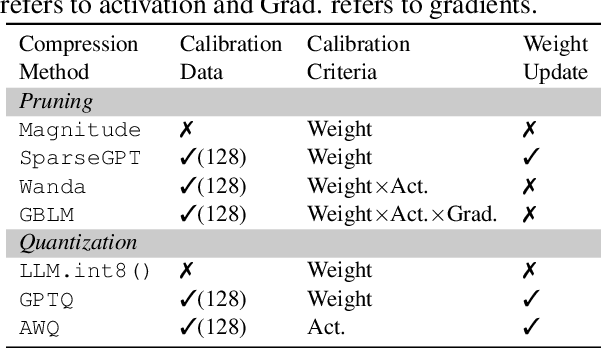

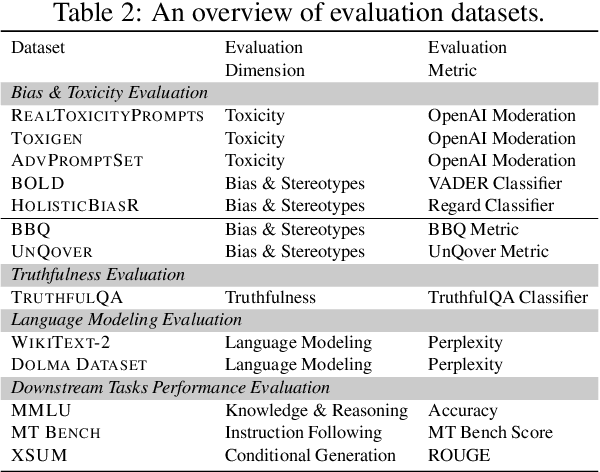
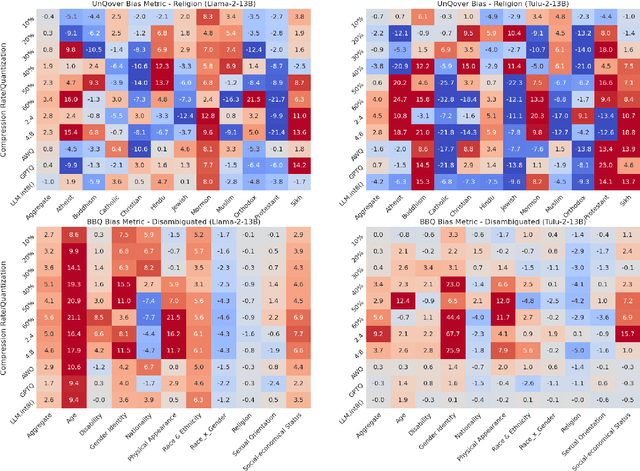
Abstract:Large language models (LLMs) are increasingly deployed in real-world scenarios with the help of recent model compression techniques. Such momentum towards local deployment means the use of compressed LLMs will widely impact a large population. However, prior analysis works often prioritize on preserving perplexity which is a direct analogy to training loss. The impact of compression method on other critical aspects of model behavior, particularly safety, still calls for a systematic assessment. To this end, we investigate the impact of model compression on four dimensions: (1) degeneration harm, i.e., bias and toxicity in generation; (2) representational harm, i.e., biases in discriminative tasks; (3) dialect bias; (4) language modeling and downstream task performance. We cover a wide spectrum of LLM compression techniques, including unstructured pruning, semi-structured pruning and quantization. Our analysis reveals that compression can lead to unexpected consequences. Although compression may unintentionally remedy LLMs' degeneration harm, it can still exacerbate on the representational harm axis. Although compression may unintentionally remedy LLMs' degeneration harm, it can still exacerbate on the representational harm axis. Moreover, there is a divergent impact on different protected groups as the compression rate grows. Finally, different compression methods have drastically different safety impacts, e.g., quantization mostly preserves bias while pruning degrades quickly. Our findings underscore the importance of integrating safety assessments into the development of compressed LLMs to ensure their reliability across real-world applications. Our full results are available here: \url{https://github.com/zhichaoxu-shufe/Beyond-Perplexity-Compression-Safety-Eval}
 Add to Chrome
Add to Chrome Add to Firefox
Add to Firefox Add to Edge
Add to Edge